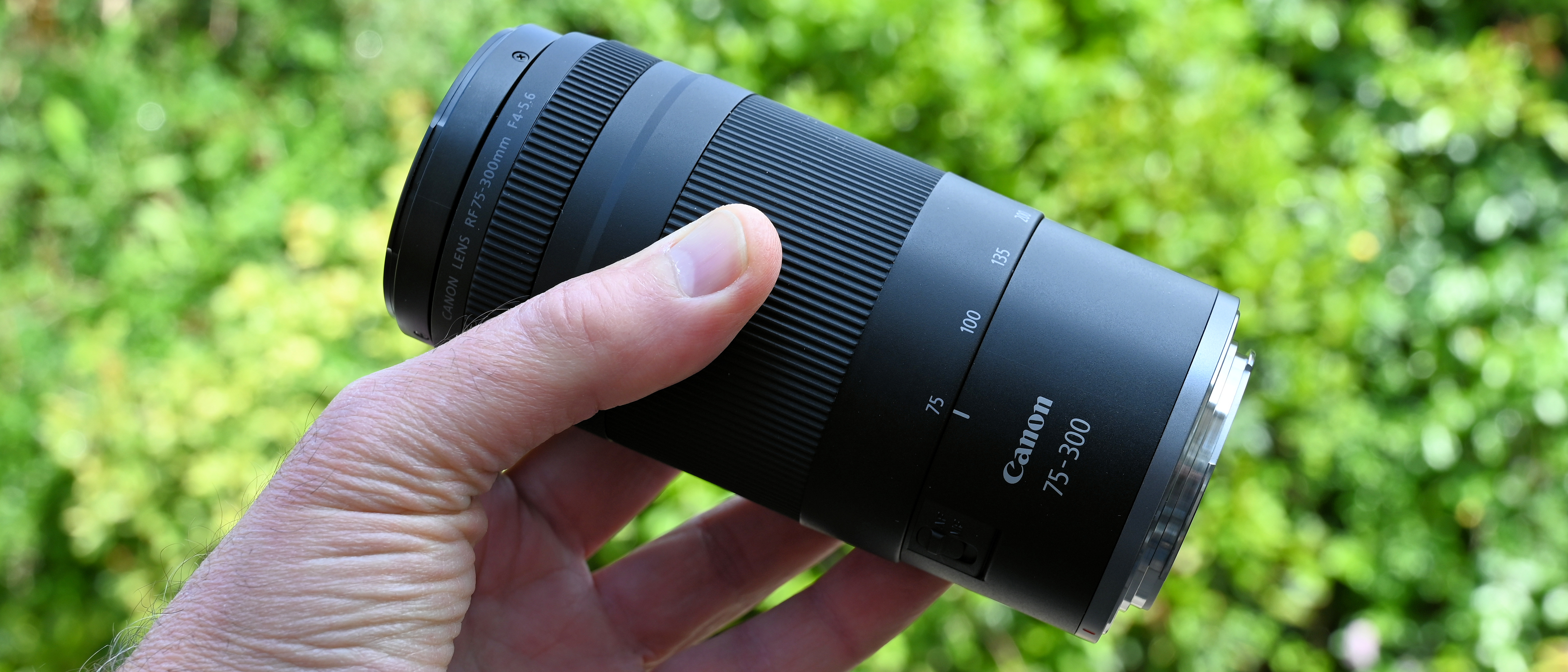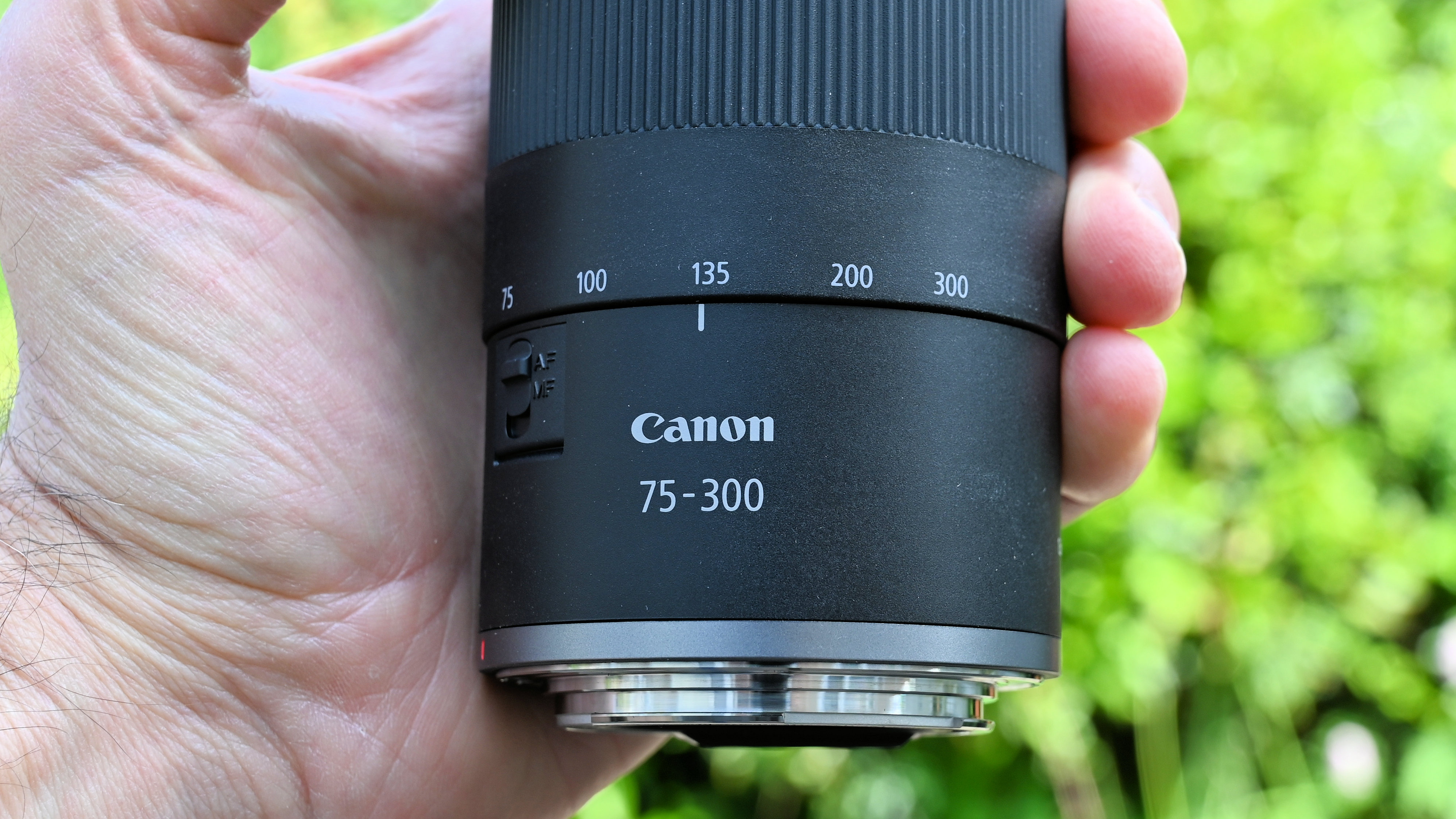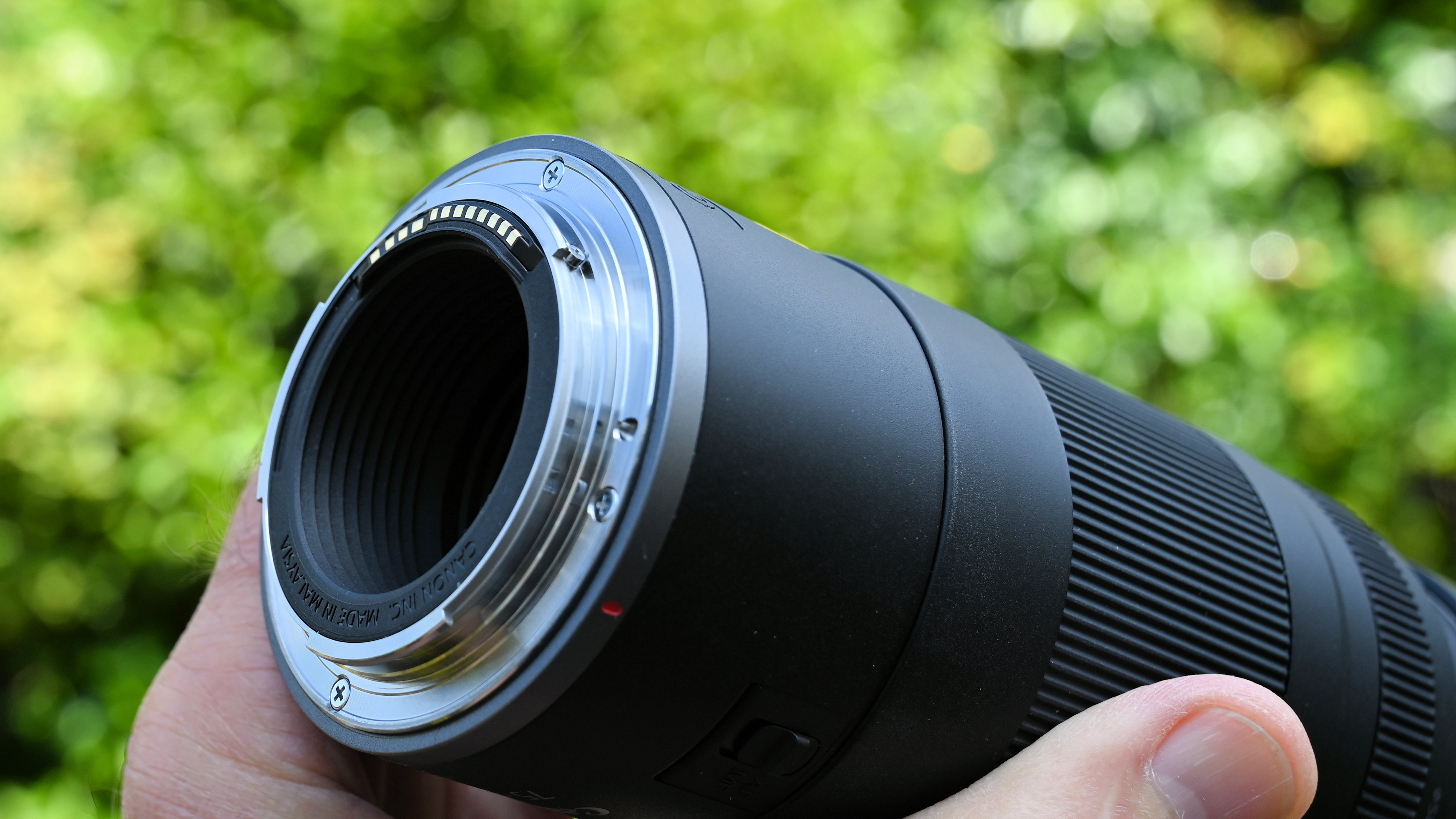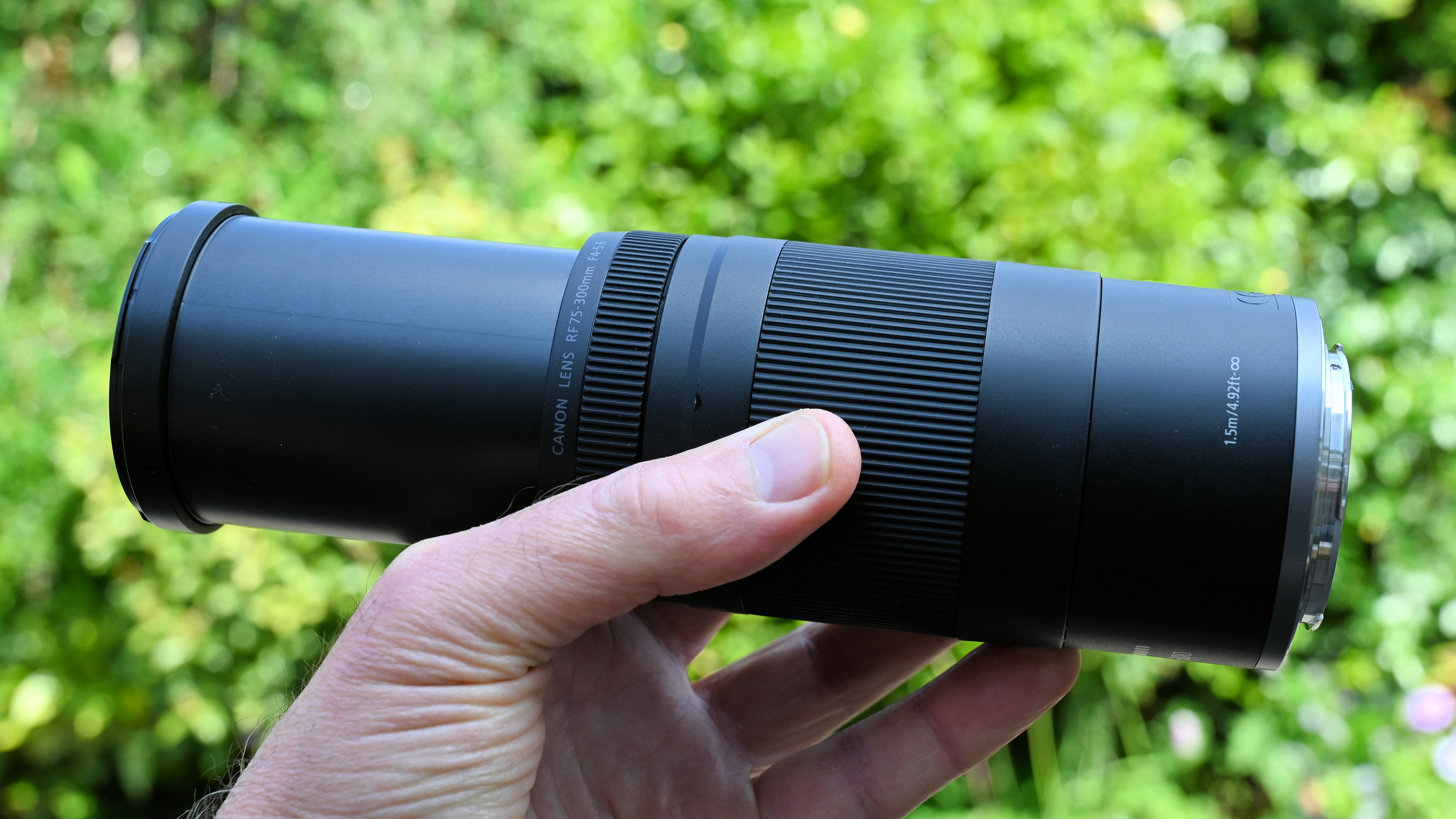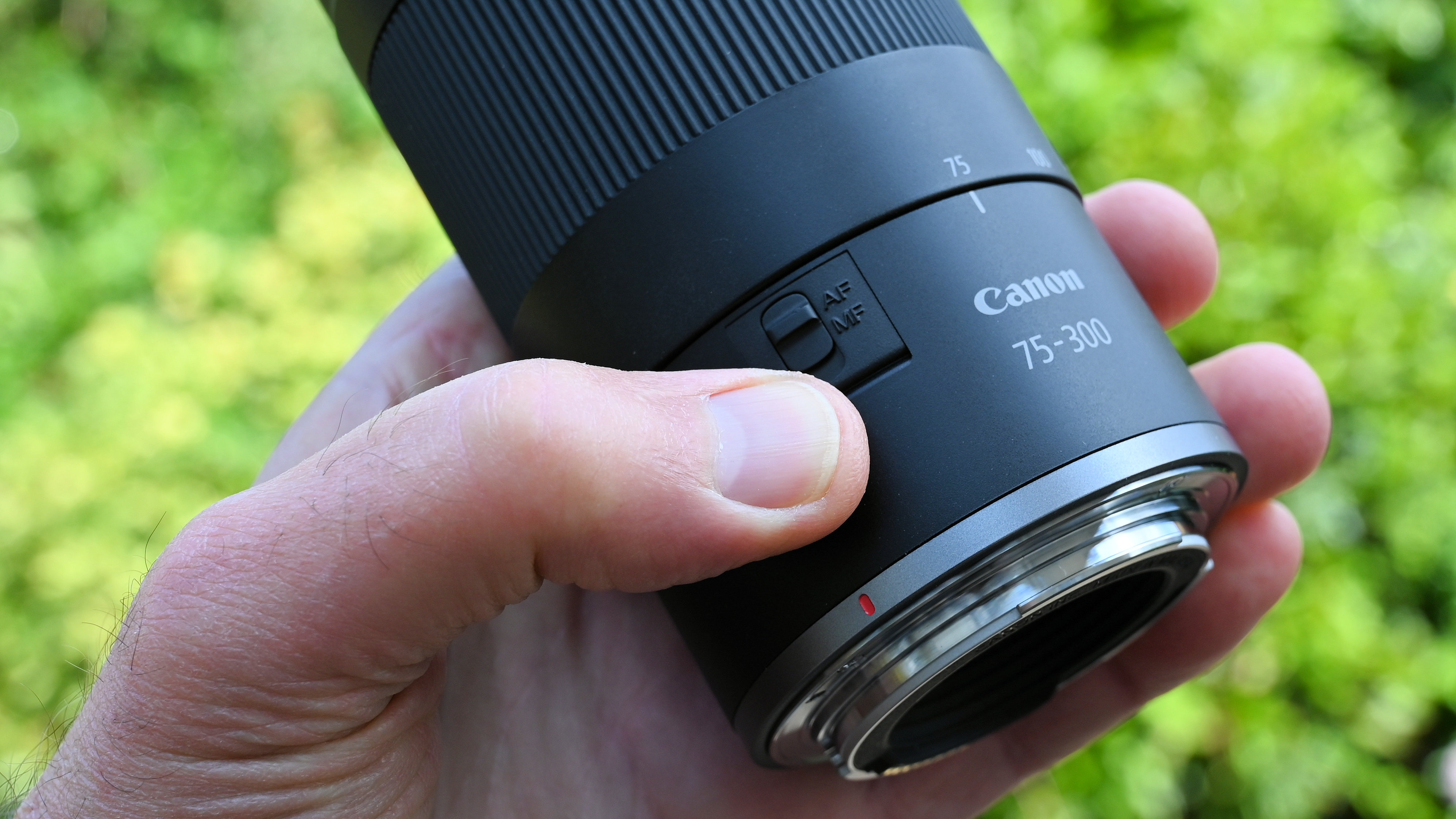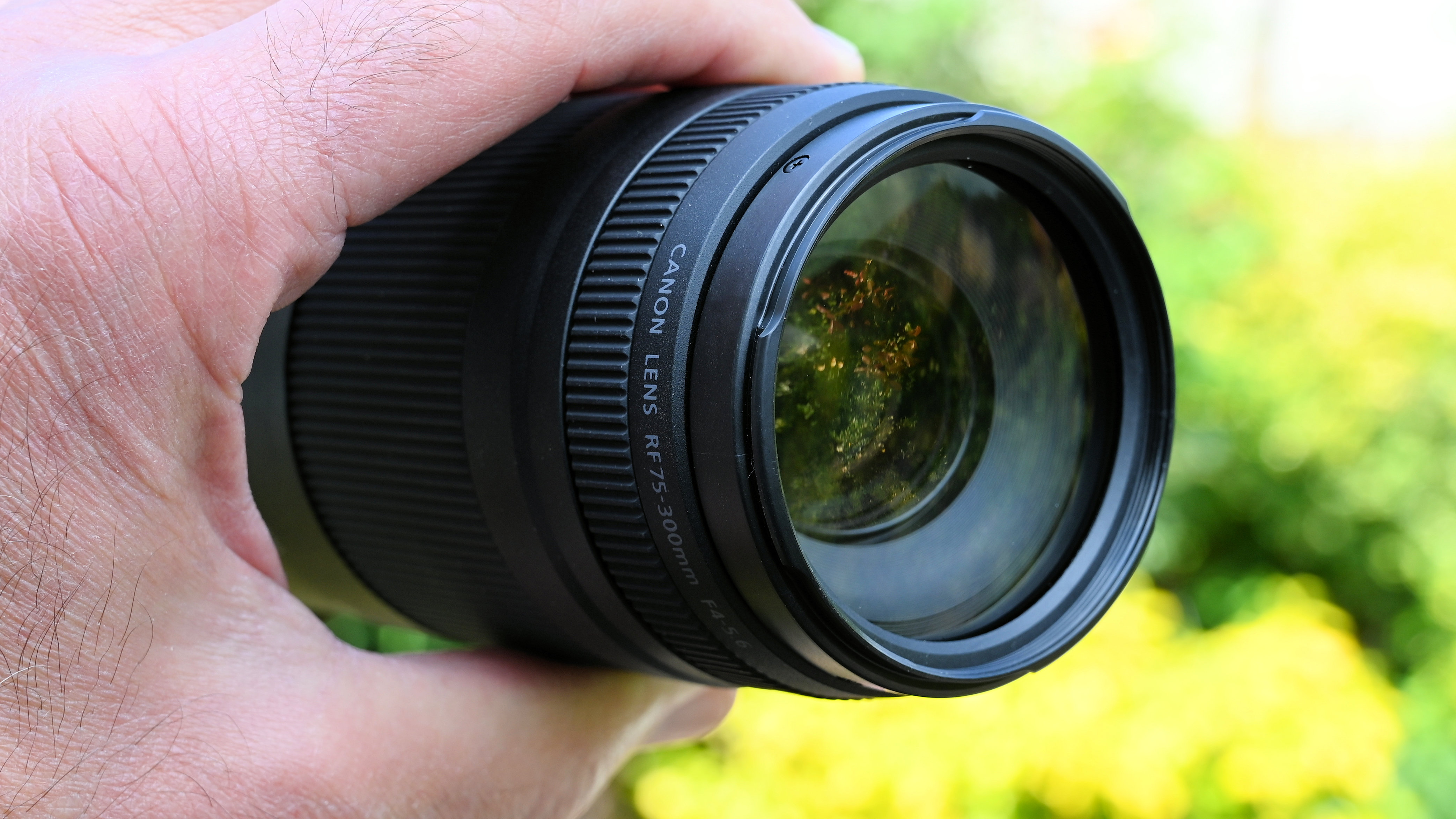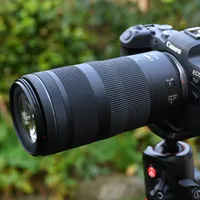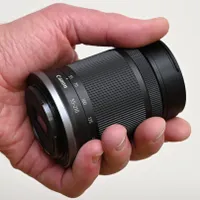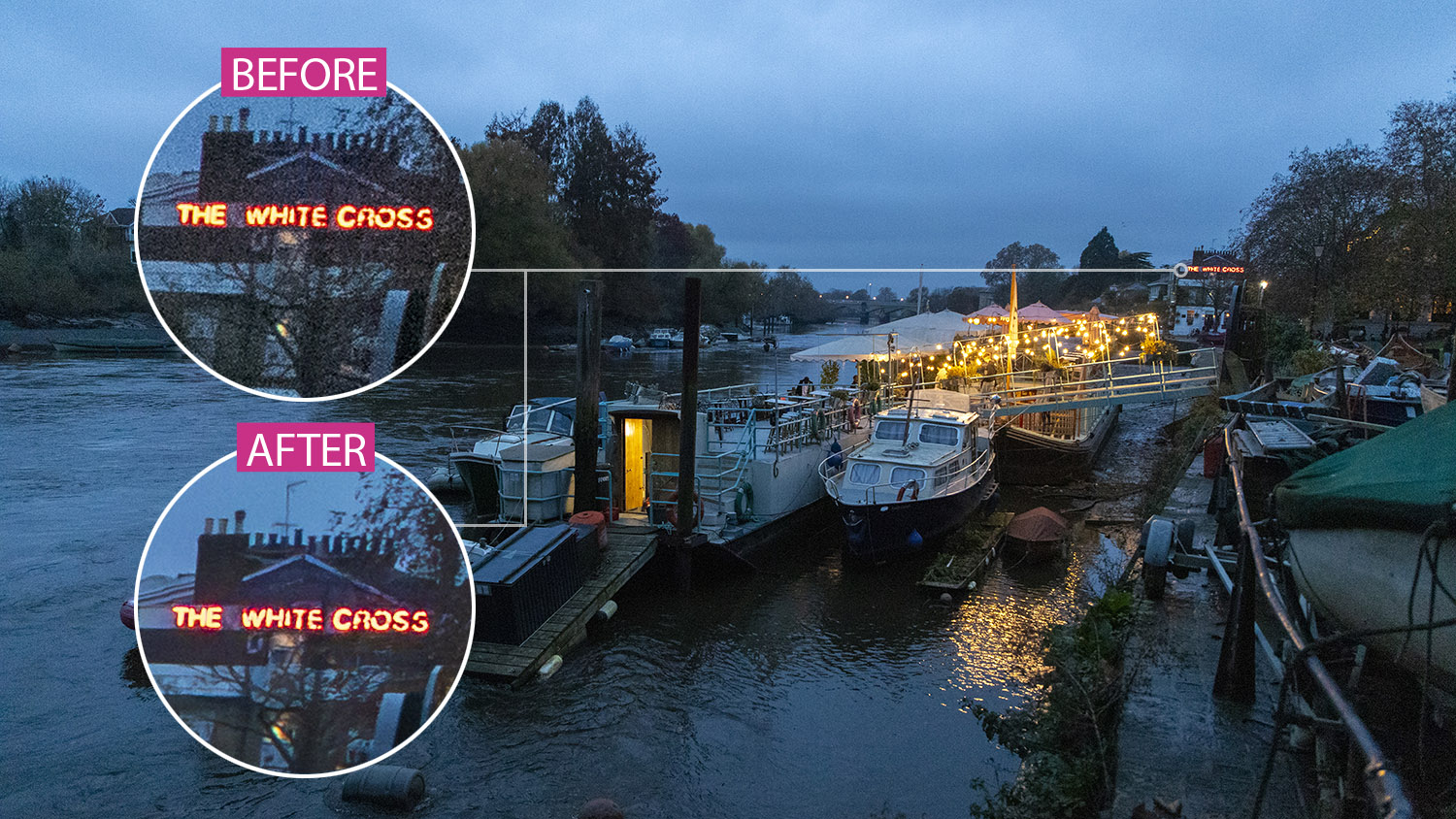Digital Camera World Verdict
The Canon RF 75-300mm f/4-5.6 is the brand new mirrorless version of what I’ve always thought was one of Canon’s all-time worst lenses for film and digital SLRs. The new RF edition follows suit in being cheap to buy, compact and lightweight, but also has all the same bugbears in terms of second-rate autofocus, poor handling, lack of optical stabilization and mediocre image quality. I’m not impressed.
Pros
- +
Compact and lightweight
- +
Relatively inexpensive
- +
Classic telephoto zoom range
Cons
- -
Slow, noisy autofocus
- -
Front element rotates with focusing
- -
No optical image stabilization
Why you can trust Digital Camera World
Roll the clock back to April 1999, before the advent of mainstream digital SLRs, and Canon launched the EF 75-300mm f/4-5.6 III for its EOS 35mm film cameras. Way back then, the Mk III was an ‘improvement’ over the Mk II, which was launched four years earlier, but failed to impress me.
The basic version had a sluggish, noisy and basic electric autofocus motor. There was no full-time manual focus override and the focus ring as well as the front element rotated during autofocus, which impaired handling. There was also no optical image stabilization, no weather-seals, a cheap-feeling build and you had to buy the hood separately as an ‘optional extra’. There was also a slightly more up-market USM (UltraSonic Motor) version but autofocus was still slow and had the same handling disappointments.
Fast-forward to 2025 and the new RF edition seems like an almost exact copy of the old Mk III EF lens. It’s identical in the number of optical elements and groups, the aperture range, the basic electric autofocus system, the lack of stabilization and the handling flaws. It also shares the same minimum focus distance, magnification ratio, filter thread and uses the same ET-60 hood, again sold separately.
I don’t think it’ll be earning a place as one of the best Canon telephoto lenses or the best Canon RF lenses for EOS R system cameras. After more than a quarter of a century, it’s hard to see what’s new and improved in this RF lens.
Canon RF 75-300mm f/4-5.6: Specifications
Mount options | Canon RF |
Lens construction | 13 elements in 9 groups |
Angle of view | 32.1-8.25 degrees |
Diaphragm blades | 7 |
Minimum aperture | f/32-45 |
Minimum focus distance | 1.5m |
Maximum magnification | 0.06x (W) 0.25x (T) |
Filter size | 58mm |
Dimensions | 71x146mm / 2.8x5.7" |
Weight | 507g / 1.12lb |
Canon RF 75-300mm f/4-5.6: Price
The last time I was completely underwhelmed by a Canon 75-300mm lens was back in 2009, when I tested the EF 75-300mm f/4-5.6 III after it had already been on sale for 10 years. At the time, it had a list price of £280 in the UK. Where I live, the list price of the new RF edition is barely any different, at $TBA / £289 / AU$399, so that’s at least something in its favor, considering how much everything else seems to have gone up in price over the last 16 years. It’s remarkably inexpensive for an own-brand Canon RF lens, with a cost that’s in the same ballpark as some budget primes, including the RF 16mm f/2.8 STM and RF 28mm f/2.8 STM, although the excellent RF 50mm f/1.8 STM costs somewhat less to buy. As I’d expect the more refined Canon RF 100-400mm f/5.6-8 IS USM full-frame compatible zoom and even the APS-C format Canon RF-S 55-210mm f/5-7.1 IS STM are pricier to buy.
Canon RF 75-300mm f/4-5.6: Design & Handling
Having possibly labored the point about all the similarities between this new RF lens and the Canon EF 75-300mm f/4-5.6 III from way back in 1999, I won’t repeat them. Let’s start fresh and take the design and handling on their own merit.
Whereas many mirrorless zoom lenses have apertures that shrink to smaller values at the long end, like the impressive yet still compact and affordable Canon RF 100-400mm f/5.6-8 IS USM, this 75-300mm lens has a more DSLR-friendly f/4-5.6 rating, better suiting the autofocus abilities of entry-level DSLR cameras. That’s no bad thing, as the full extra f/stop in speed at the long end compared with the RF 100-400mm lens makes it easier to freeze action under low lighting conditions, without bumping up your camera’s ISO setting as much.
The best camera deals, reviews, product advice, and unmissable photography news, direct to your inbox!
Okay, I said I wouldn’t but I will. I wonder if the optical design is the same as that of the EF lens, as it has the same number of elements and groups, minimum focus distance, maximum magnification ratio and so on. The RF lens is physically about an inch longer, which could account for the additional distance required due to the EOS R system’s lack of a reflex mirror assembly. At the other end of the price scale, I’ve seen something similar in the shape of the Canon RF 400mm f/2.8L IS USM lens, which is essentially the same as the older EF lens but with an RF mount adapter built into the back end.
Either way, the RF 75-300mm is a seriously compact and lightweight lens that’s ideally suited to entry-level EOS R system cameras. In the full-frame camp, that includes the EOS RP and EOS R8, whereas the lens has a boosted ‘effective’ zoom range of 120-480mm on APS-C format EOS R system cameras.
It’s therefore unfortunate that the lens doesn’t feature optical image stabilization. Camera-shake is an ever-present danger when shooting handheld with telephoto lenses, and neither of the full-frame bodies I’ve mentioned have IBIS (In-Body Image Stabilization), and the only APS-C body that currently has IBIS is the EOS R7.
Typical of the breed, this budget-friendly, variable-aperture telephoto zoom has an inner barrel that physically extends as you stretch from the shortest to the longest zoom setting. That’s only to be expected and, sure enough, there’s a sizeable increase.
What’s much more uncommon in modern lenses is that the front element and in fact the whole inner barrel rotates during focusing, as well as extending slightly at shorter focus settings. This impairs handling, as you have to keep your fingers clear of the focus ring during autofocus. In fairness though, the focus ring is placed right at the front of the lens so it’s fairly easy to avoid any unintentional contact.
It’s more of a pain if you’re using rotation-specific filters, like a circular polarizer, ND grad (Neutral Density, graduated) or starburst filter, as the filter rotates during focusing.
The lens features an AF/MF auto/manual focus mode switch, which is something I always like to see as it cuts down the time spent rummaging around in camera menus. Autofocus itself relies on a basic electric ‘DC’ motor, as Canon calls it. It’s typically sluggish and clearly audible in operation, as well as precluding the possibility of manual override of autofocus, making that AF/MF switch even more important. It’s a long time since I’ve seen a Canon autofocus lens with this basic type of motor, and it’s a very poor relation to all the other RF lenses with STM (Stepping Motor), USM (UltraSonic Motor), Nano USM or VCM (Voice Coil Motor) systems.
As expected for one of Canon’s low-budget lenses, this one doesn’t feature any weather-seals but, unlike some, it does at least have a metal rather than plastic mounting plate. It’s also no surprise that the lens is sold with no hood, which pretty much an essential extra in my book. Canon tends to only include hoods with its pricey L-series lenses. For the official Canon ET-60 hood, you’ll need to shell out an additional $30 / £22 / AU$25, or thereabouts. On the plus side, there’s at least some resistance to ghosting and flare even in the absence of a hood, thanks to the application of Canon’s trusty Super Spectra coating.
Canon RF 75-300mm f/4-5.6: Performance
It bears repeating that autofocus is relatively slow and noisy, compared with the vast majority of modern autofocus lenses made by Canon and other manufacturers. On the plus side, it’s at least accurate on quite a consistent basis. At the center of the image frame, levels of sharpness are pretty reasonable throughout most of the zoom range, only dropping off at the longest zoom setting. Sharpness in the intermediate area between center and edge is relatively lackluster, and more disappointing out at the edges and corners.
The example shots above and below demonstrate the extents of the zoom range. They were taken from the same position using the shortest and longest zoom settings respectively.
In practical terms, sharpness in handheld shooting could be improved by optical image stabilization, which is sadly lacking in the lens. It’s worth bearing in mind that even for cameras that do feature IBIS, optical stabilization tends to be more effective when using telephoto lenses.
There’s more bad news when it comes to color fringing. It’s actually quite minimal at the shortest zoom setting but gets worse and worse as you extend through the zoom range, being pretty dire in the 200-300mm sector. Thankfully, the automatic in-camera correction of EOS R system bodies can remedy the situation to a large extent.
Better news is that distortion is virtually zero at the shortest zoom setting, although pincushion becomes more noticeable as you extend through the zoom range. Again, automatic in-camera correction is available in EOS R system cameras and, in fairness, native distortion is much less than with very many Canon RF lenses that I’ve tested and that have been through our lab. Overall though, I’d have to say that performance is disappointing.
Canon RF 75-300mm f/4-5.6: Sample Images
The following gallery of sample shots was taken at Bristol Floating Harbour in the UK on a sunny morning. The images were taken at various focal lengths throughout the entire zoom range.









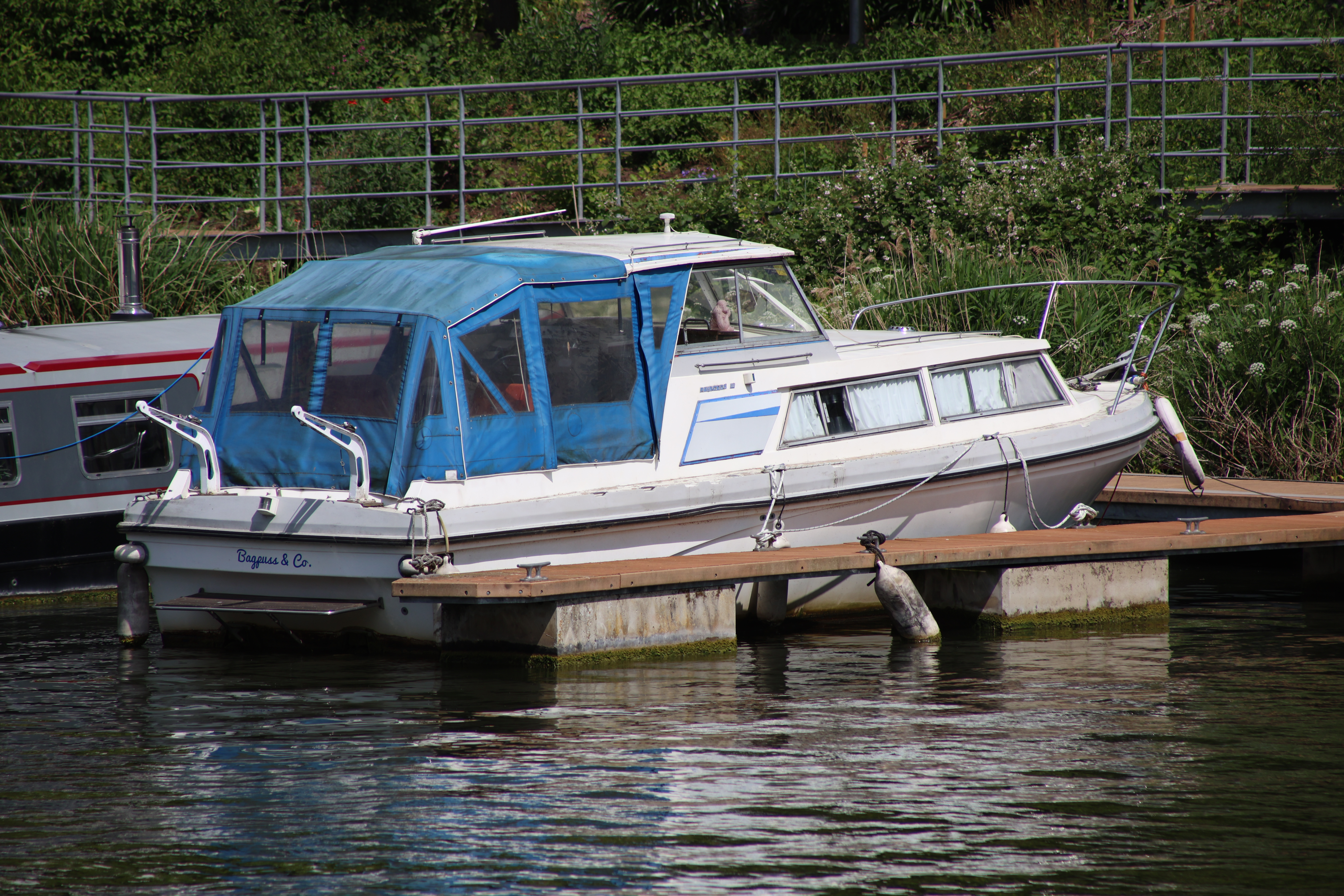







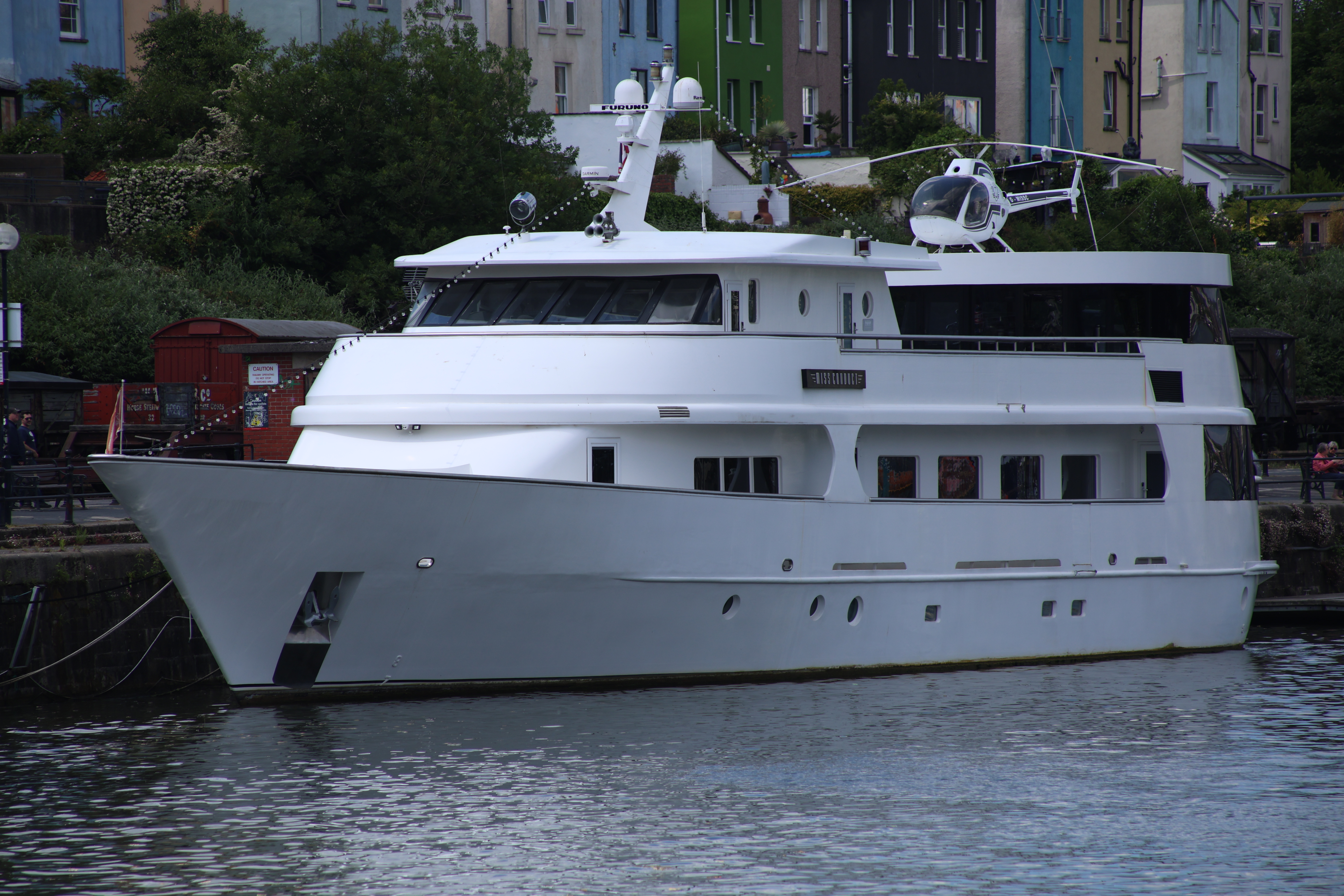









Canon RF 75-300mm f/4-5.6: Lab Results
We run a range of lab tests under controlled conditions, using the Imatest Master testing suite. Photos of test charts are taken across the range of apertures and zooms (where available), then analyzed for sharpness, distortion and chromatic aberrations.
We use Imatest SFR (spatial frequency response) charts and analysis software to plot lens resolution at the center of the image frame, corners and mid-point distances, across the range of aperture settings and, with zoom lenses, at four different focal lengths. The tests also measure distortion and color fringing (chromatic aberration).
Sharpness:
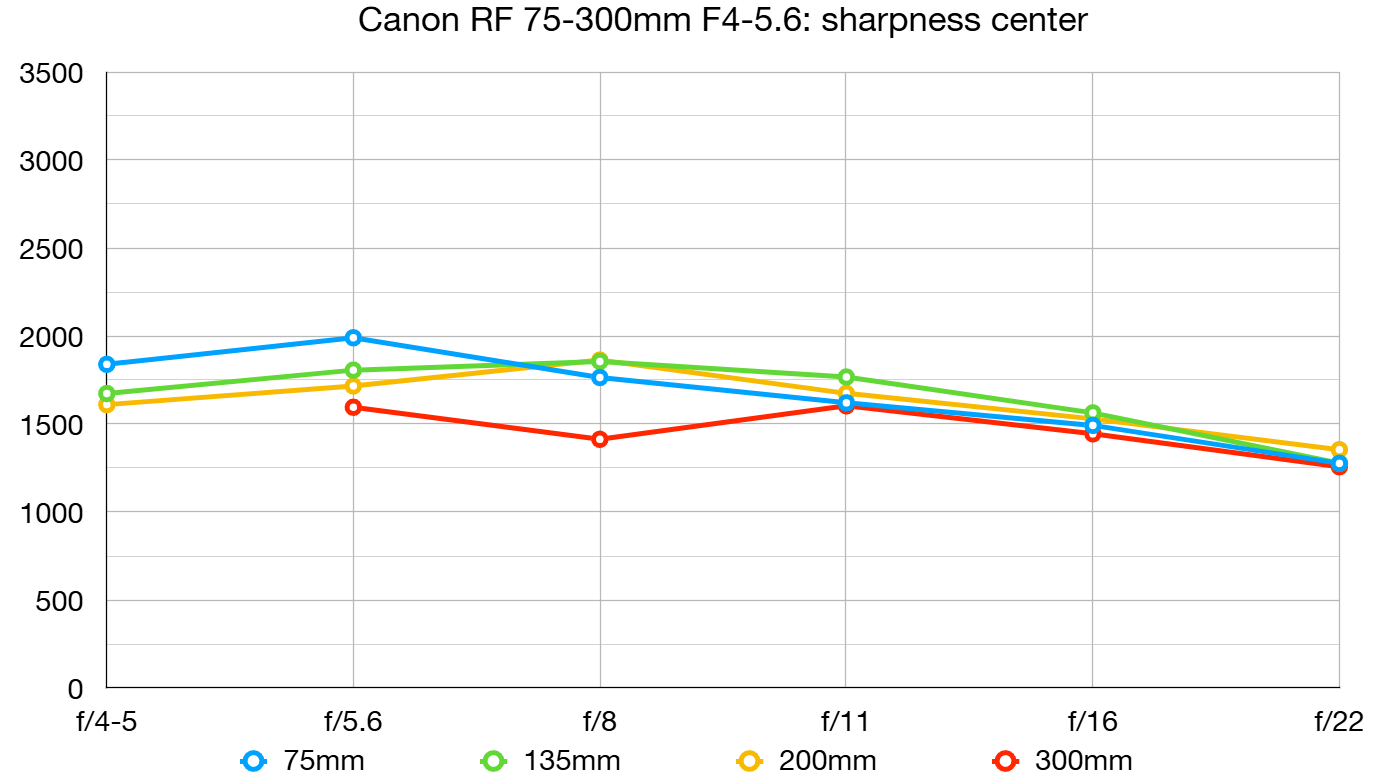

Sharpness is pretty good at the center of the image frame at all but the very longest zoom setting but soon starts to drop off as you stray away from the middle towards the edges. Extreme edge/corner sharpness is downright disappointing.
Fringing:
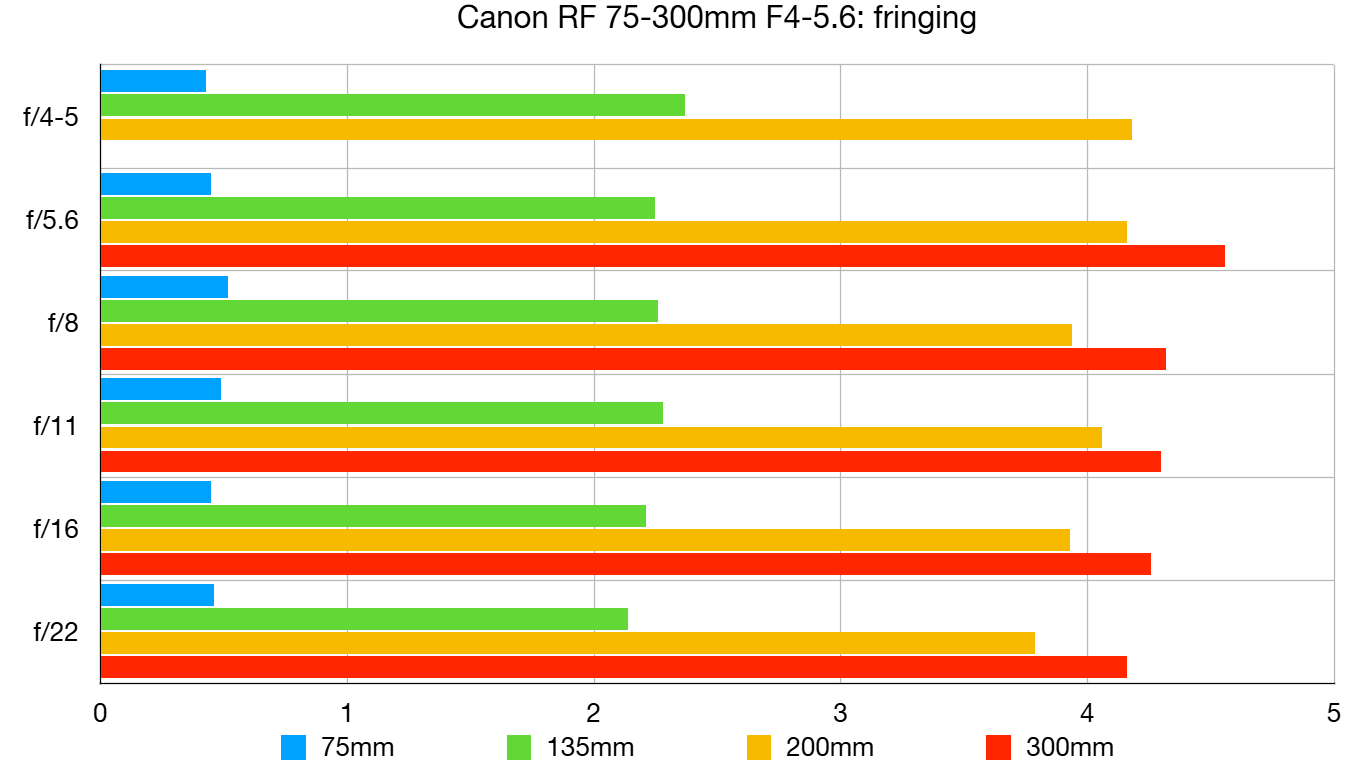
Without automatic in-camera correction, color fringing is clearly visible at a zoom setting of 135mm and very noticeable at longer focal lengths. It’s particularly bad in the 200-300mm sector of the zoom range.
Distortion:
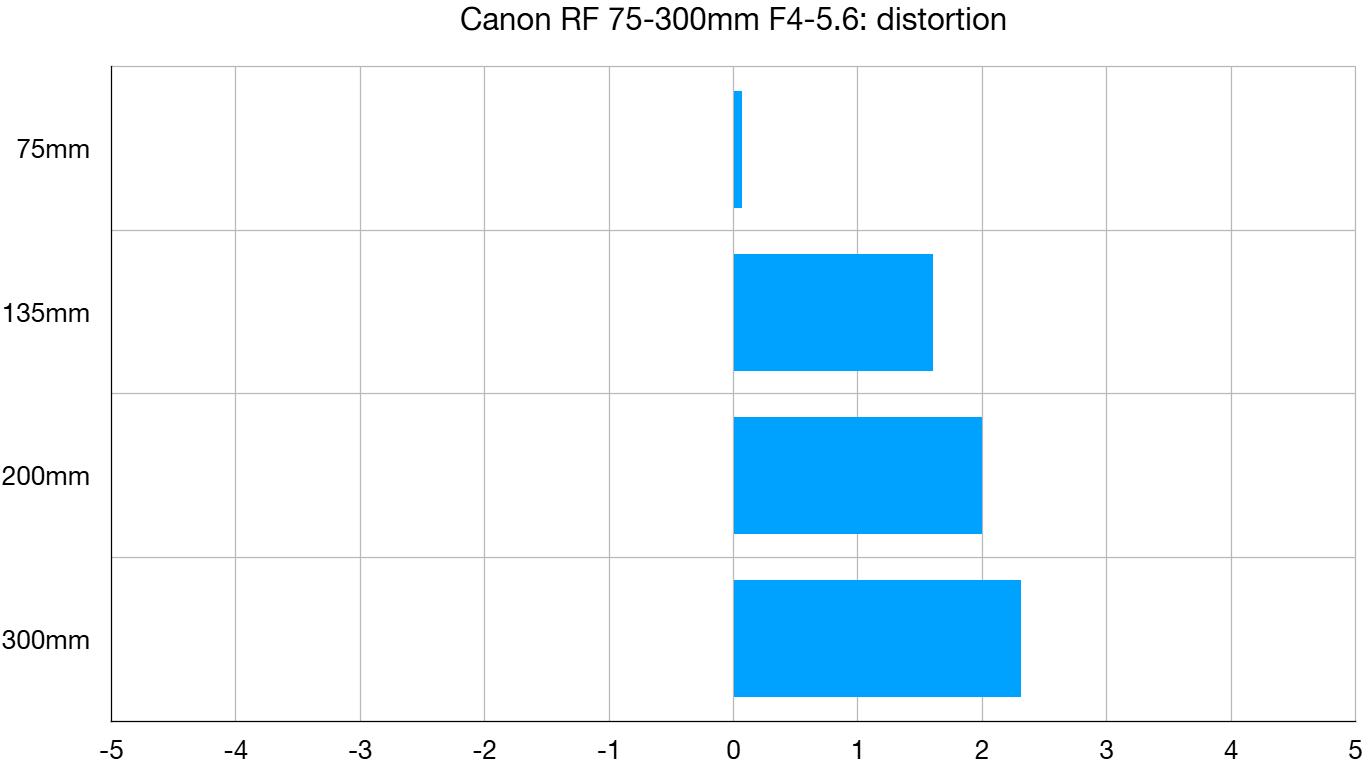
There’s virtually no distortion at the shortest focal length of 75mm but pincushion becomes progressively worse as you extend through the zoom range to 300mm. Even so, the actual amounts of distortion are rather less than with many lenses that are designed for mirrorless cameras, which rely very heavily on automatic in-camera correction.
Canon RF 75-300mm f/4-5.6: Verdict
I just don’t like this lens. Sure, it’s designed to be compact, lightweight and affordable, and yes, it’s all of those things. It just feels like a very retrograde step compared with every other Canon RF lens I’ve used, and I’ve used most of them. In terms of autofocus, handling, stabilization (lack of) and image quality, I feel I’ve gone back 25 years to the days of the EF 75-300mm f/4-5.6 III, which I thought was a very disappointing lens even then. Nowadays, I’d expect much better from an own-brand Canon lens, no matter how ‘affordable’ the price.
Features ★★★☆☆ | The autofocus system is comparatively slow and noisy, and there’s no optical image stabilization. |
Design ★★★☆☆ | The lens feels like it’s built down to a price. Handling is poor with a focus ring that rotates during autofocus. |
Performance ★★★☆☆ | Sharpness is pretty respectable at the center of the image frame but overall image quality and performance are second-rate. |
Value ★★★☆☆ | For a telephoto zoom lens, it’s relatively cheap to buy but I feel it’s still not very good value and the hood costs extra. |
Alternatives
The Canon RF 100-400mm f/5.6-8 IS USM looks, feels and performs much more like a thoroughly modern, budget-friendly telephoto zoom for the mirrorless age. It’s quite a lot pricier to buy but well worth the extra outlay.
<p><strong>Read the full <a href="https://www.digitalcameraworld.com/reviews/canon-rf-100-400mm-f56-8-is-usm-review"><strong>Canon RF 100-400mm f/5.6-8 IS USM review<strong>...The Canon RF-S 55-210mm f/5-7.1 IS STM is a much more viable proposition for APS-C format EOS R system cameras, despite its more limited maximum reach. The optical image stabilizer and USM autofocus system really pay dividends.
<p><strong>Read the full <a href="https://www.digitalcameraworld.com/reviews/canon-rf-s-55-210mm-f5-71-is-stm-review"><strong>Canon RF-S 55-210mm f/5-7.1 IS STM review<strong>...Matthew Richards is a photographer and journalist who has spent years using and reviewing all manner of photo gear. He is Digital Camera World's principal lens reviewer – and has tested more primes and zooms than most people have had hot dinners!
His expertise with equipment doesn’t end there, though. He is also an encyclopedia when it comes to all manner of cameras, camera holsters and bags, flashguns, tripods and heads, printers, papers and inks, and just about anything imaging-related.
In an earlier life he was a broadcast engineer at the BBC, as well as a former editor of PC Guide.
You must confirm your public display name before commenting
Please logout and then login again, you will then be prompted to enter your display name.
